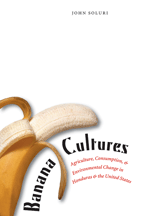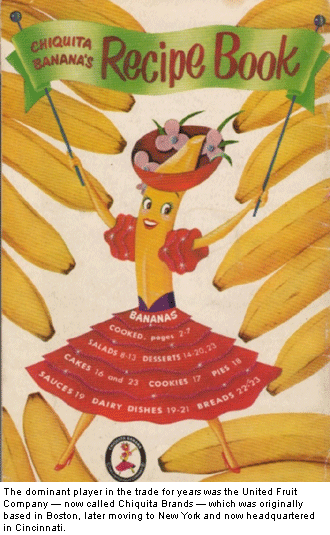History Professor John Soluri’s new book is a little bananas.

Wait, that’s an understatement. The book is a lot of bananas. In fact, it’s nothing but bananas. And that’s not as crazy as it sounds. Bananas are the world’s most popular fruit, and the major export of crop of several Latin American nations, including Honduras and Ecuador.
In “Banana Cultures: Agriculture, Consumption, and Environmental Change in Honduras and the United States” Soluri explores the relationship between the production and consumption of bananas as a cultural and economic phenomenon. The book spans more than 100 years, starting in the 1870s, when bananas spread from small-scale farms in Cuba, Jamaica and the Bay Islands to mainland Central America.
Bananas, once an exotic fruit in the United States, rapidly became widely available in the 1870s. They were the first affordable fresh fruit available year-round in the United States.

“The export banana is a great example of globalization, because it gave rise to multinational corporations, biotechnologies, and novel forms of cultural exchange starting 100 years ago,” Soluri said. “Immigrant mill workers in places like Homestead could at least on occasion enjoy a taste of the tropics.”
Bananas came to dominate lowland Central American agriculture, and have played a major role in the economies and social fabric of the region. They also shaped U.S. perceptions of Central America, imbedding terms like “banana republic” in the popular consciousness, according to Soluri.
The banana industry followed a pattern typical of modern agriculture, with large concerns swallowing up small farms and devouring farmland. The dominant player in the trade for years was the United Fruit Company—now called Chiquita Brands—which was originally based in Boston, later moving to New York and now headquartered in Cincinnati.
The large banana exporters behaved not unlike American industry—often exploiting workers but with a paternalistic bent that included the construction of worker housing, hospitals and ballfields. These “banana zones” featured higher wages and standards of living, and much of the workforce eventually succeeded in unionizing after organizing massive strikes.
“The banana industry brought modernity to these low-lying tropical areas,” Soluri said.
Soluri spent a year in Honduras, talking to workers, examining a variety of archives and investigating the environmental impact of the banana industry. The first half of the 20th century witnessed large-scale deforestation as banana monocultures consumed more and more land, and led to the draining of wetlands.
Much of Soluri’s research examines the historical effects of plant diseases on the industry. For more than 100 years, export banana growers have wrestled with the devastation wrought by fungi, which led them to abandon the Gros Michel variety of banana in the 1960s and which may cause the industry to replace the Gros Michel’s successor, the Cavendish banana, in the near future. Soluri argues that these diseases are not natural disasters but rather the outcome of mass production techniques that favor monocultures and mass markets that favor standardized products.
Banana eaters, however, need not fear. Recent media reports about the fruit’s possible demise are greatly exaggerated. There are hundreds of varieties cultivated worldwide. The challenge for the future, according to Soluri, is to develop production methods and mass market structures that foster an export banana that fosters a sustainable and equitable use of resources in the tropics.
Said Soluri, “If that happens, we might be able to say, ‘Yes, we have no banana republics today.’”
“Banana Cultures” was published by the University of Texas Press and is available at https://www.utexas.edu/utpress/books/solban.html.
Related Links:
“Banana Cultuers”
John Soluri



